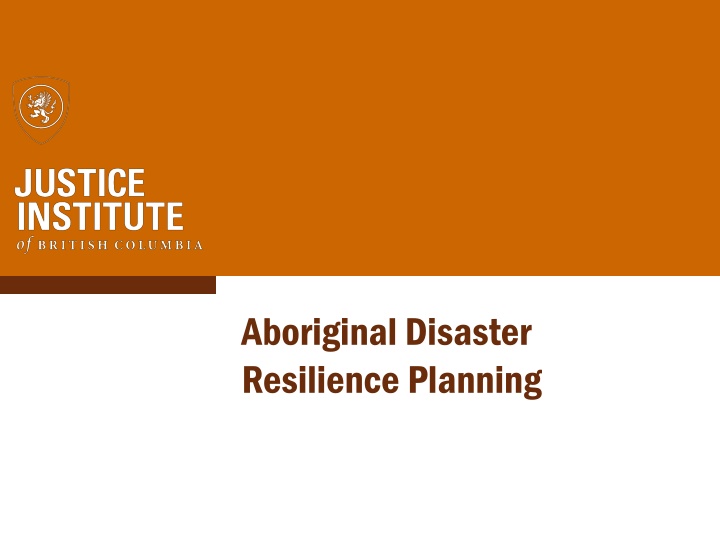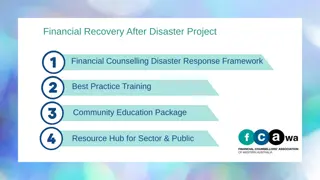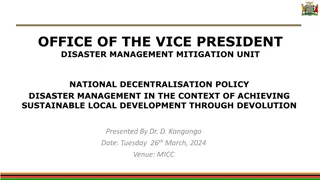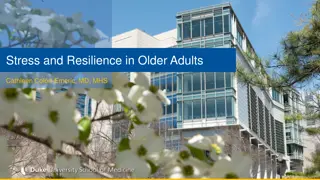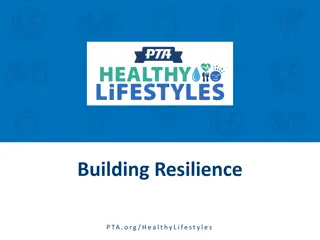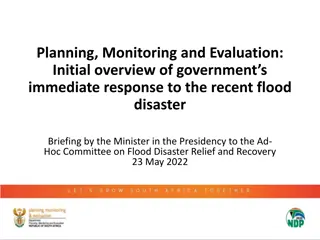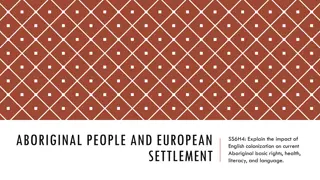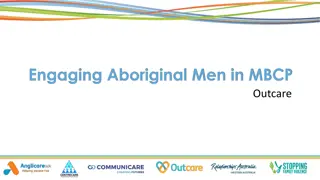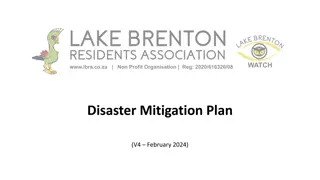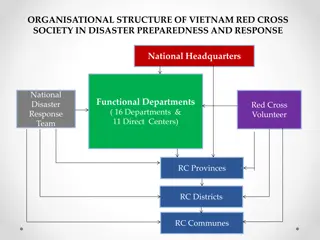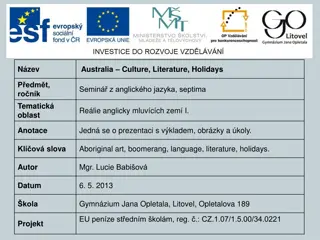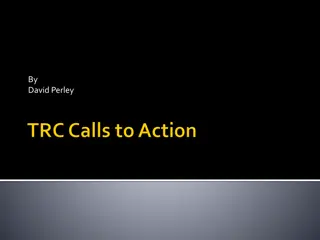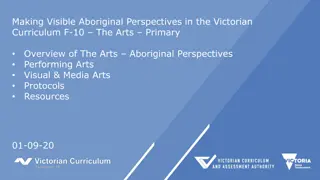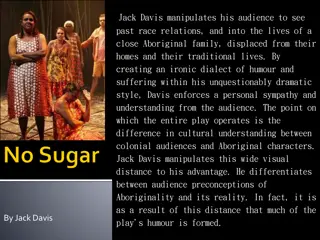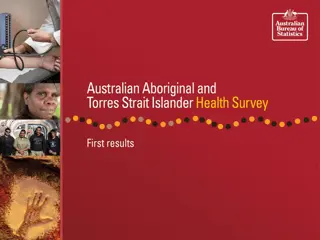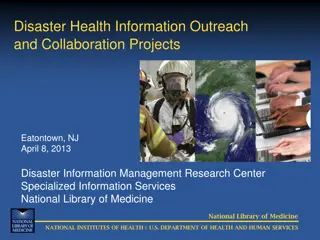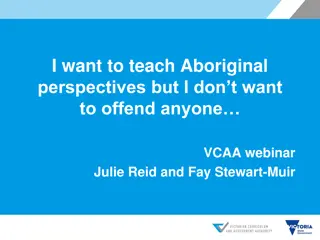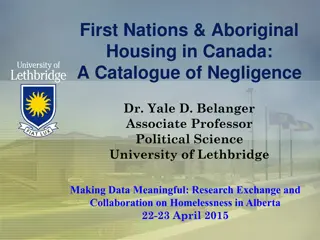Aboriginal Disaster Resilience Planning Overview
Concept of Aboriginal Disaster Resiliency, including its definition, examples, and what it is not. Learn about the importance of disaster resilience in communities and how to prepare for and adapt to potential disasters.
Download Presentation

Please find below an Image/Link to download the presentation.
The content on the website is provided AS IS for your information and personal use only. It may not be sold, licensed, or shared on other websites without obtaining consent from the author.If you encounter any issues during the download, it is possible that the publisher has removed the file from their server.
You are allowed to download the files provided on this website for personal or commercial use, subject to the condition that they are used lawfully. All files are the property of their respective owners.
The content on the website is provided AS IS for your information and personal use only. It may not be sold, licensed, or shared on other websites without obtaining consent from the author.
E N D
Presentation Transcript
Aboriginal Disaster Resilience Planning
Welcome to Aboriginal Disaster Resilience Planning
Introductions Your name Your affiliation Your position What you hope to take away from today s session
Todays Agenda Welcome, Introductions & Overview Morning Break Step One Getting Started Lunch break Step Two Resilience Assessment Afternoon Break Step Three Building a Resilience Plan Step Four Plan Implementation Finish around 4:30 p.m.
What is Aboriginal Disaster Resiliency? The ability to survive and thrive in the face of uncertainty The ability to anticipate and prepare to survive and creatively adapt and return to transform to better meet future challenges while accepting and integrating one s losses
What is Aboriginal Disaster Resiliency? Disaster resilience refers to a community s ability to anticipate, and where possible, prevent or at least minimize the potential damage a disaster might cause. It involves how well a community can cope with the effects of a disaster if it occurs, to maintain certain basic functions and structures during the disaster, and to recover and adapt to the changes that result.
What is Aboriginal Disaster Resiliency? Examples: Making sure that homes are FireSmart with clearing between the home & the forest Having an evacuation plan Ensuring buildings are seismically safe Having an exercise to test the community s ability to manage a potential flood
What Aboriginal Disaster Resiliency is NOT It is not an Emergency Plan But the findings of the ADRP will help to inform existing Emergency Management Plans opportunities to strengthen existing plans & procedures and fill in gaps Indicate Assist communities to identify high risk hazards for setting priorities for hazard- specific exercises Identify potential evacuation routes and warning messages
Aboriginal Disaster Resiliency Planning Will: Support Key Disaster and Community Planning Decisions The ADRP has linkages to social & economical development planning Identify and support decisions to engage in mitigation strategies & apply for funding Contribute to land- use planning options to ensure communities Build Safe, Build Smart Identify opportunities to protect those most at risk
Why is Aboriginal Disaster Resiliency Important? It is already a key dimension of Aboriginal communities Disasters will happen! Aboriginal communities have an opportunity to build on their strengths to ensure that they survive the next disaster as best as is possible To better meet future needs
Funded by Indigenous and Northern Affairs Canada Website developed between November 2014 and March 2015 Website was a re-imaging of the Rural Disaster Resilience Planning website Basic architecture retained All resources and text reviewed and revised
The Project Team Research Co-Leads on the Project: Brenda Murphy & Laurie Pearce Aboriginal Consultants: Terrina Bellegarde, Christine Brown, Michelle Buchholz, Annette Chretien, David Diabo, Wendall Nicholas, Lorraine Tordiff Project Management and Administration: Bryce Gunson, Dawn Ursuliak & Ron Bowles
The Project Team Research Team: Marc D Aquino, Toni Baggos, Eric Bussey, Debby Danard, Ryan Huron, Heather Stager, Marit Heideman, Michelle Marteleira, Eddie Oldfield Design and development of the online & print guide book: Melanie Meyers, Tannis Morgan, Dennis Yip and Michael Fabri, Ricardo Rosado
The Training Team Aboriginal Consultant & Facilitator: Robert Mills Research & Facilitation Staff: Bettina Falloon Brenda Murphy Laurie Pearce Sarah Wareing Project Management and Administration: Ron Bowles Marc D Aquino Bryce Gunson Viktor Simon Dawn Ursuliak
Go to Aboriginal Disaster Resilience Planning website https://adrp.jibc.ca
Back to online Aboriginal disaster resilience planning https://adrp.jibc.ca
Additional Resources Training Videos Resources Guide Reports Guide Glossary ADRP Guide
Next Steps Take feedback from today s session and adapt training as required Workshops in Alberta, Ontario & Nova Scotia Make amendments & upload training tools Translate into French
Thank You! Contact Information Laurie Pearce: lpearce@jibc.ca Brenda Murphy: bmurphy@wlu.ca Dawn Ursuliak: dursuliak@jibc.ca
